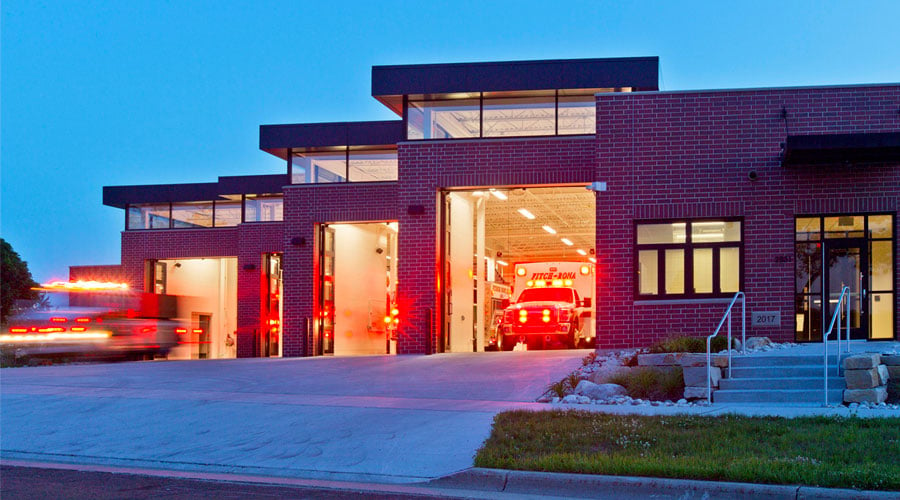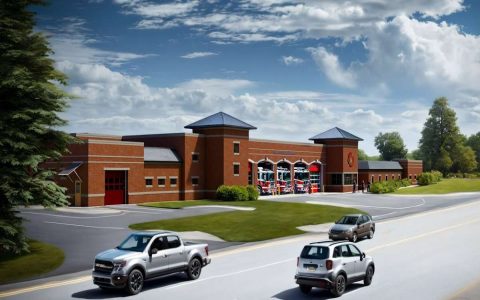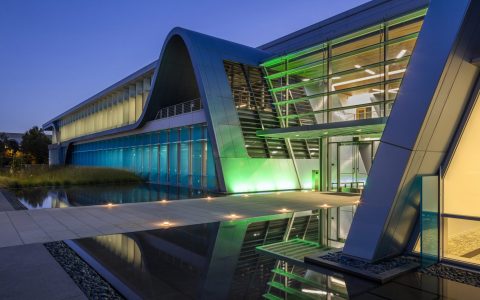Modern fire stations are purpose-built operational hubs designed for peak efficiency, firefighter well-being, and community engagement, far exceeding the capabilities of traditional structures.
Key Attributes of Modern Fire Stations
- Optimized for Rapid Response:
- Strategic layouts ensure minimal turnout times, often featuring direct access from living quarters to apparatus bays.
- Drive-through apparatus bays enhance speed and safety, eliminating the need for vehicles to reverse into the station.
- Advanced alerting systems and automated station controls (e.g., lighting, bay doors) further reduce response delays.
- Integration of Advanced Technology:
- Sophisticated computer-aided dispatch (CAD) and records management systems (RMS).
- Real-time information access, both in-station and en-route, via mobile data terminals and integrated dashboard displays.
- High-fidelity training simulators for realistic scenario-based learning and skills maintenance.
- Smart building technology for energy management, security, and operational control.
- Prioritization of Firefighter Health and Safety:
- Dedicated decontamination zones (often designated as Hot, Warm, and Cold zones) to mitigate exposure to carcinogens and other contaminants. This includes specialized gear extractors, washers, and drying cabinets.
- Living quarters designed for rest and recuperation, often featuring individual bunk rooms, improved acoustics for noise reduction, and circadian rhythm lighting.
- Comprehensive fitness facilities with job-specific training equipment to maintain physical preparedness and reduce injury.
- Spaces and resources dedicated to supporting mental wellness, such as quiet rooms or access to peer support programs.
- Sustainability and Resilience:
- Incorporation of green building design principles, such as energy-efficient HVAC systems, LED lighting, solar power generation, rainwater harvesting, and the use of sustainable or recycled materials.
- Designs focused on resilience to natural disasters and power outages, ensuring the station can remain operational as a critical infrastructure during community emergencies. This may include backup generators and hardened structures.
- Community Engagement and Education:
- Inclusion of public-access areas, such as community meeting rooms, small historical displays, or safe havens for the public during certain emergencies.
- Facilities for public safety education, CPR training, and fire prevention demonstrations.
Strategic Siting: Modern fire stations are meticulously located based on comprehensive risk assessments, population density analysis, and response time modeling to provide optimal community coverage and efficient service delivery.
These evolving facilities represent a significant investment in public safety, reflecting a commitment to leveraging design and technology to enhance emergency response capabilities, protect the long-term health of emergency responders, and build stronger, more resilient communities.








